Why Cant I Get Comfortable Drawing Fat Bodies
Draw authentic basic and muscle
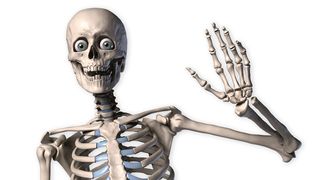
Anatomy is a huge subject and requires a blend of scientific information and artistic practicality. For example, you lot demand an engineering-similar understanding of how the skeletal joints work to construct your figures. But if yous don't know how to draw (opens in new tab) well enough to get a adept gesture, no technical agreement of the joints is going to salvage you from bad-mannered-looking movement.
Likewise many artists get stuck on i side or the other: either having a consummate agreement of medical anatomy, but existence unable to draw a convincing- looking bicep. Or having plenty figure-drawing experience to be able to fake the grade, but not really understanding what they're doing and inevitably drawing something physically impossible.
Nonetheless when everything is in residual, anatomy is magic, and it enables you to create a human figure in whatsoever pose you want without reference. I'll practice my best to go you started in this workshop, with an introduction to the skeleton and musculus physiology besides as a few specific hints and tips on depicting the body muscles. For more information, see our posts on how to draw muscles (opens in new tab), and how to draw an arm (opens in new tab).
01. Report the skeleton
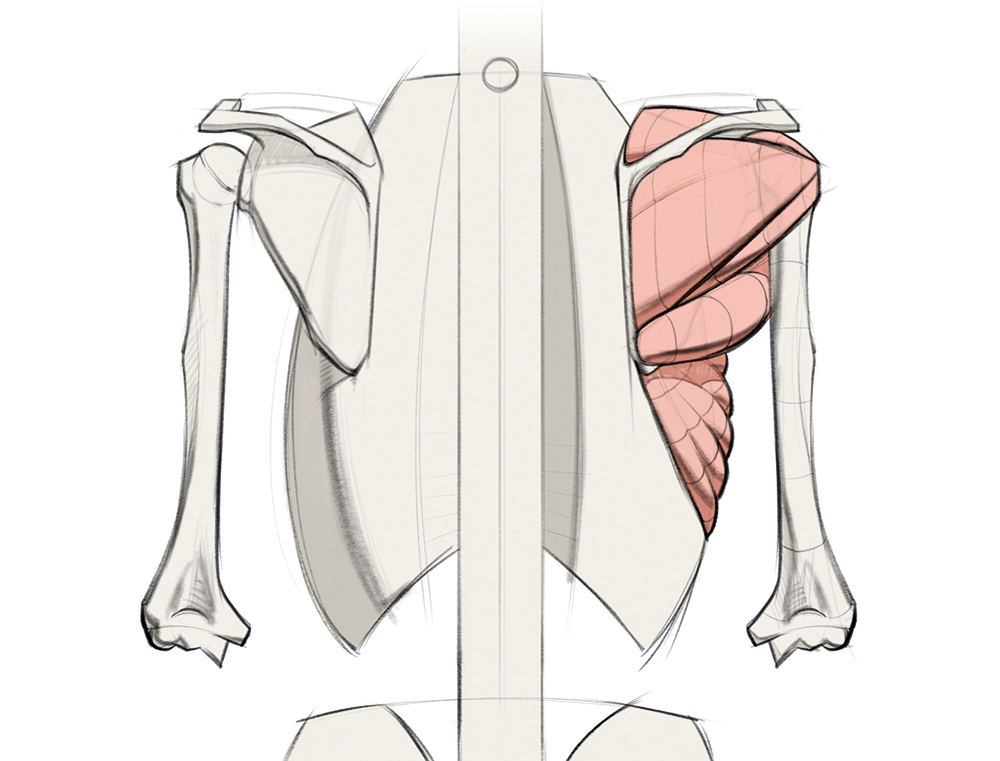
Bones are the foundation of the trunk. Muscle and fat, in contrast, can vary wildly from person to person and fifty-fifty throughout a lifetime. The skeleton, however, is much more reliable. Agreement it is vital for knowing where to attach muscles, and also helps with proportion. For case, the rib cage will always be as deep as the head is tall, no thing how much fat or muscle in that location is on top.
02. Employ the bony landmarks

To help identify the placement of the skeleton, look for the bony landmarks. These are primal spots on the body where the bones are superficial, with no muscle or fat blocking them from the surface of the skin, and include your collarbones, elbows and the dorsum of your spine. They're more trustworthy than skin-based landmarks like the navel, because pare can sag and stretch. Trust me, the bony landmarks are your new best friend.
03. Giving yourself a headstart
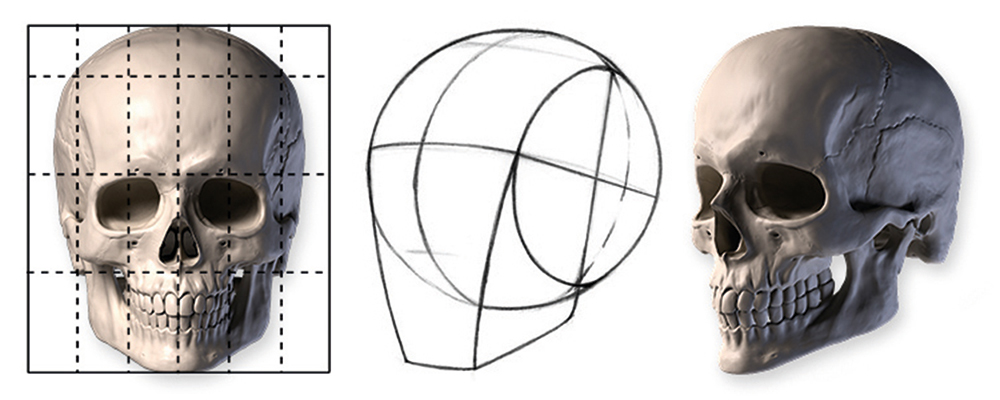
There are three master masses that determine the rest of the human trunk: the caput, the rib muzzle and the pelvis. The spine connects these, and connects to the arms and legs. Nosotros need a potent understanding of these forms and then we can invent them from any bending, which means simplifying them down to a manageable structure. For the head, that'southward a sphere for the attic and a block for the jaw.
04. Depicting the rib cage
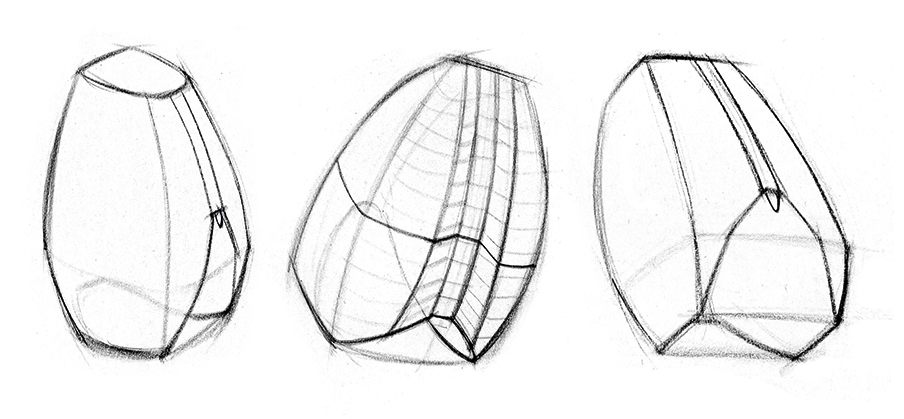
Simply speaking, the rib cage is egg-like, but we tin can practise better than that. It has nigh the same depth every bit the caput, just it's i-and-a-half head heights tall and one-and- a-quarter wide. It's thinnest nigh the neck and reaches its widest point about two-thirds down. One time you have the major proportions established, you lot tin can identify the end of the sternum halfway down the rib muzzle, and construct the thoracic curvation below information technology. Don't forget to define the edge betwixt the forepart plane and side aeroplane of the rib cage.
05. How to simplify the pelvis
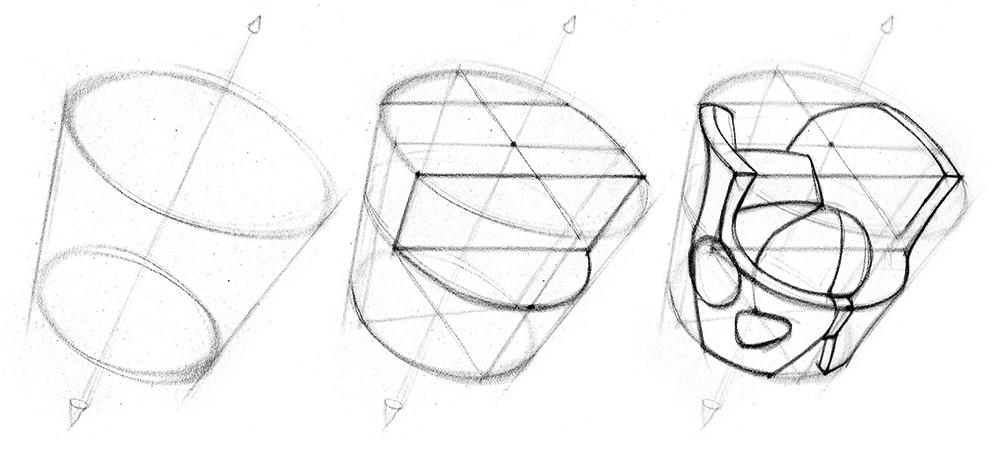
Okay, this ane looks complicated, I know, simply that makes simplifying all the more important. On a guy, it'south roughly the aforementioned width as the rib cage and about every bit tall as the head. The female pelvis is wider and shorter. Keeping those proportions in mind, the pelvis is essentially a bucket. Take out a wedge from the front end of the bucket to ascertain the pubic symphysis and the front end of the iliac crest. Y'all tin keep to shave sections off piece past piece to articulate a perfect pelvis.
06. How to master muscles
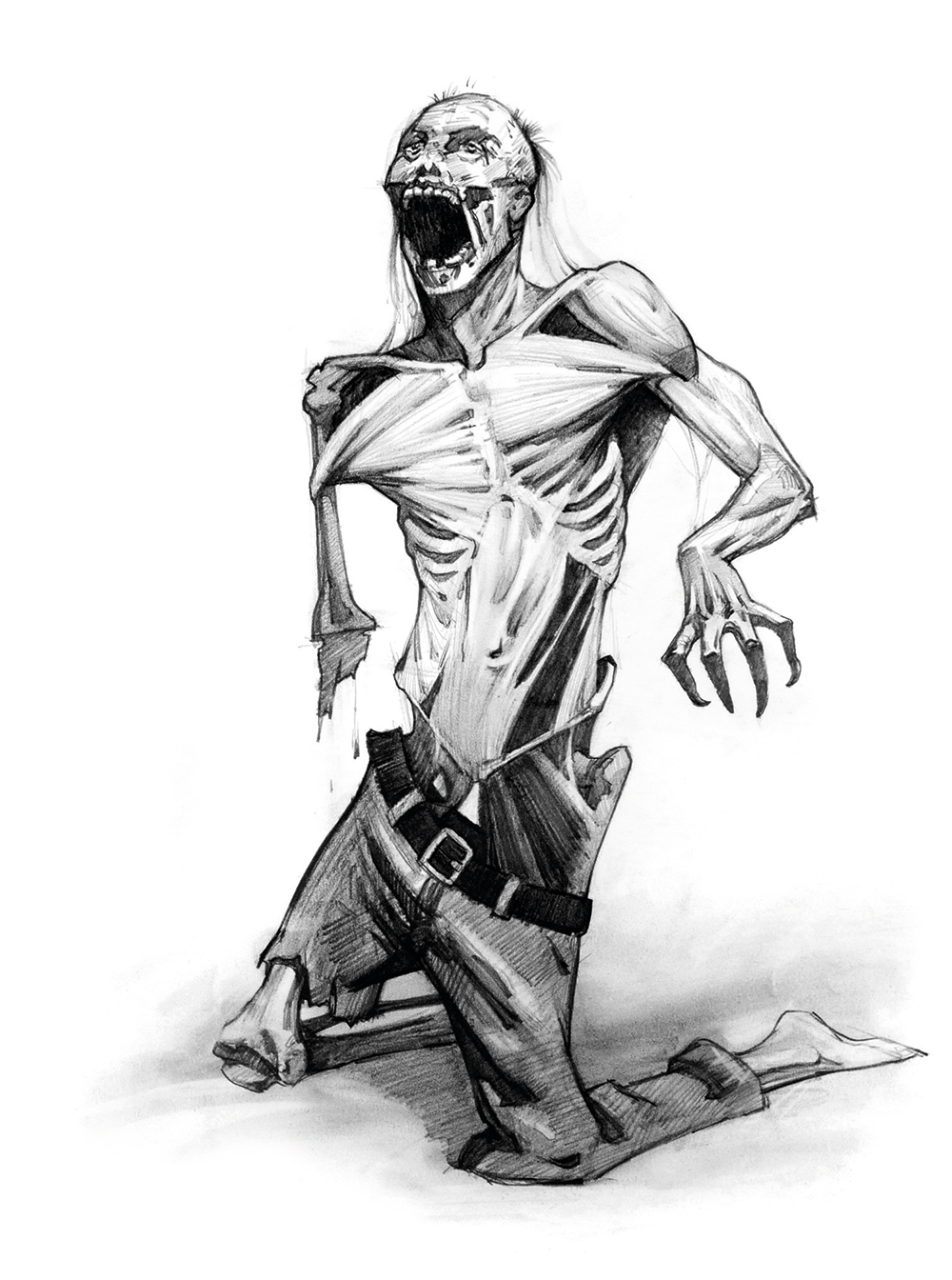
To master a muscle, you should study its origin, insertion, function, adversary and form. The origin is where the muscle attaches on the more cardinal or stationary function of the body, and the insertion is the zipper on the outer or more movable office of the body. When the muscle contracts, it pulls the insertion closer to the origin. The most of import aspect to study is the class. When you lot understand muscle in 3 dimensions (including its major planes changes and where information technology'due south the thinnest and thickest) you'll be able to draw it from whatsoever angle, and under whatever lighting conditions.
07. Learn the functions
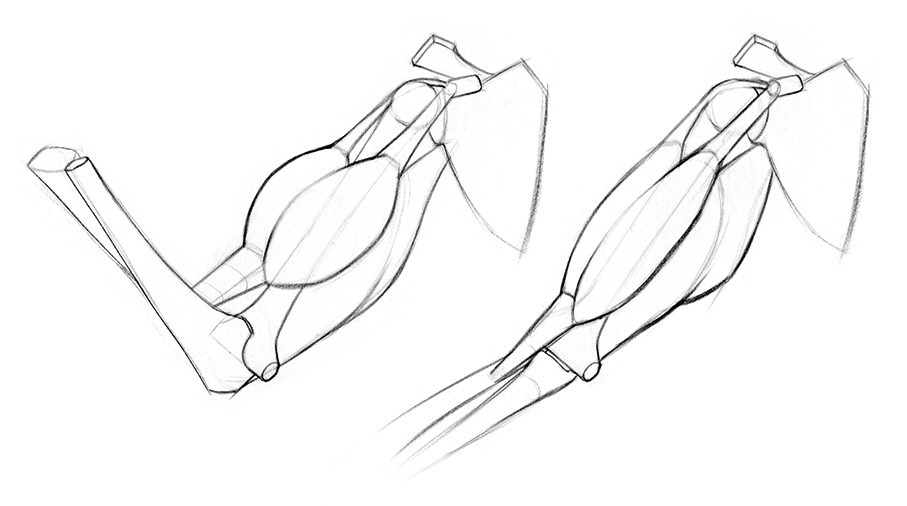
As you already know, muscles contract to pull the insertion closer to the origin. They aren't capable of relaxing past themselves, then they need an antagonist to pull in the opposite direction and stretch them back out. The bicep bends the arm (flexion), and the tricep straightens the arm (extension). Understanding muscles' functions helps you draw a natural-looking figure past flexing and relaxing the muscles appropriately for that pose. Avert the constipated bodybuilder wait.
08. How to define the muscle groups
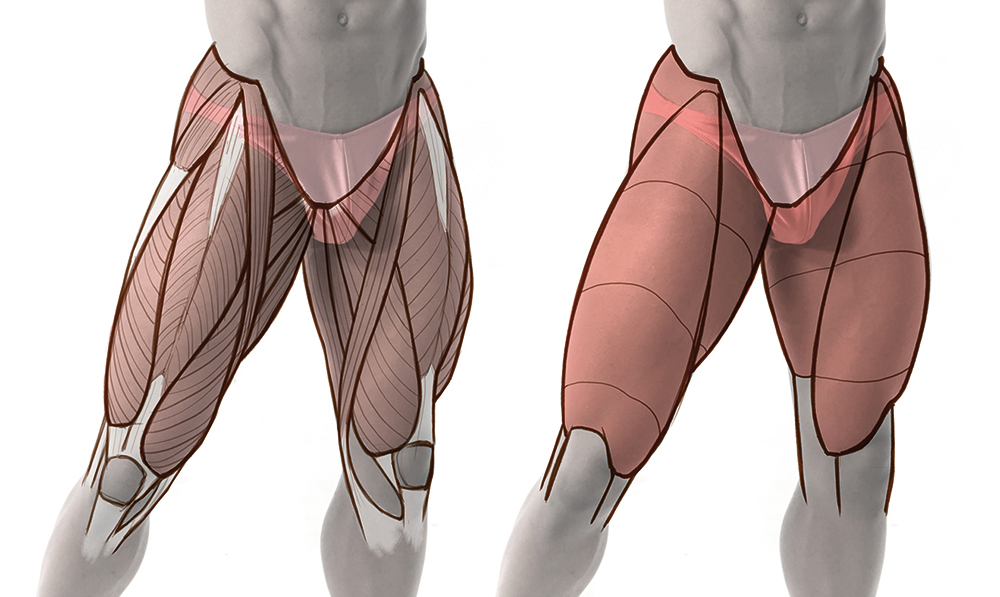
Neighbouring muscles with like functions can be grouped together. When the muscles are flexed they'll pop out and be individually singled-out. But if they're relaxed at the same time, they'll blend into one big, smoothen course. For example, the quads of the leg (rectus femoris, vastus lateralis, vastus intermedius and vastus medialis) can be grouped together into one class. Utilize these opportunities for simplifying anatomy to create a balance of active and passive areas in your drawings.
09. Muscle fibres and tendons
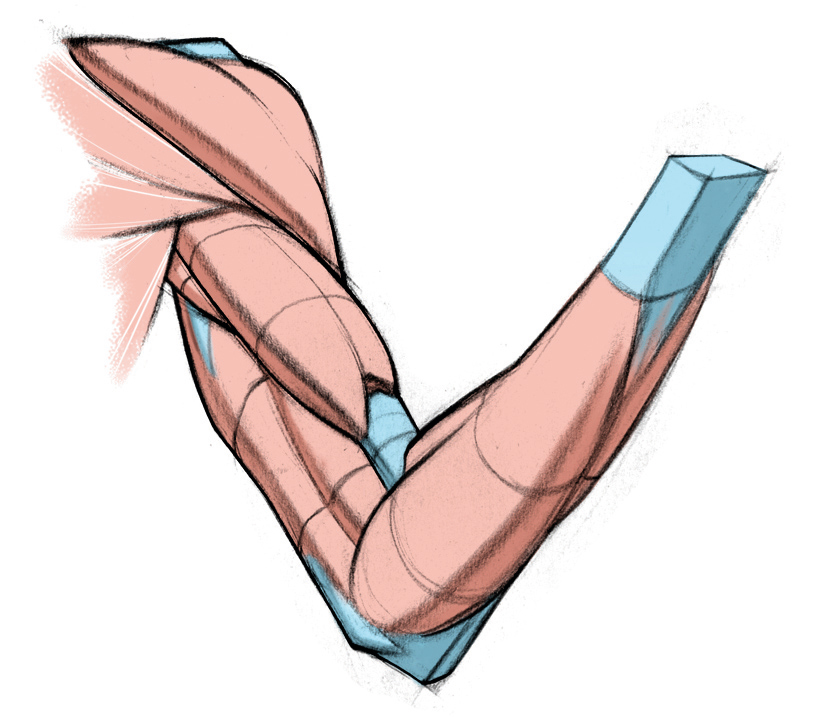
Let'south take a step back and await at what makes up a musculus. The red muscle fibre is what shortens when the muscle is flexed. It doesn't directly adhere to the bone, only rather, information technology attaches to a middleman material called a tendon. Tendons can't shorten or stretch like muscles can. They simply record musculus to bone. When the muscle fibres are contracted and bulging, the tendon will often appear as flat depression or furrow.
10. Long versus short muscles
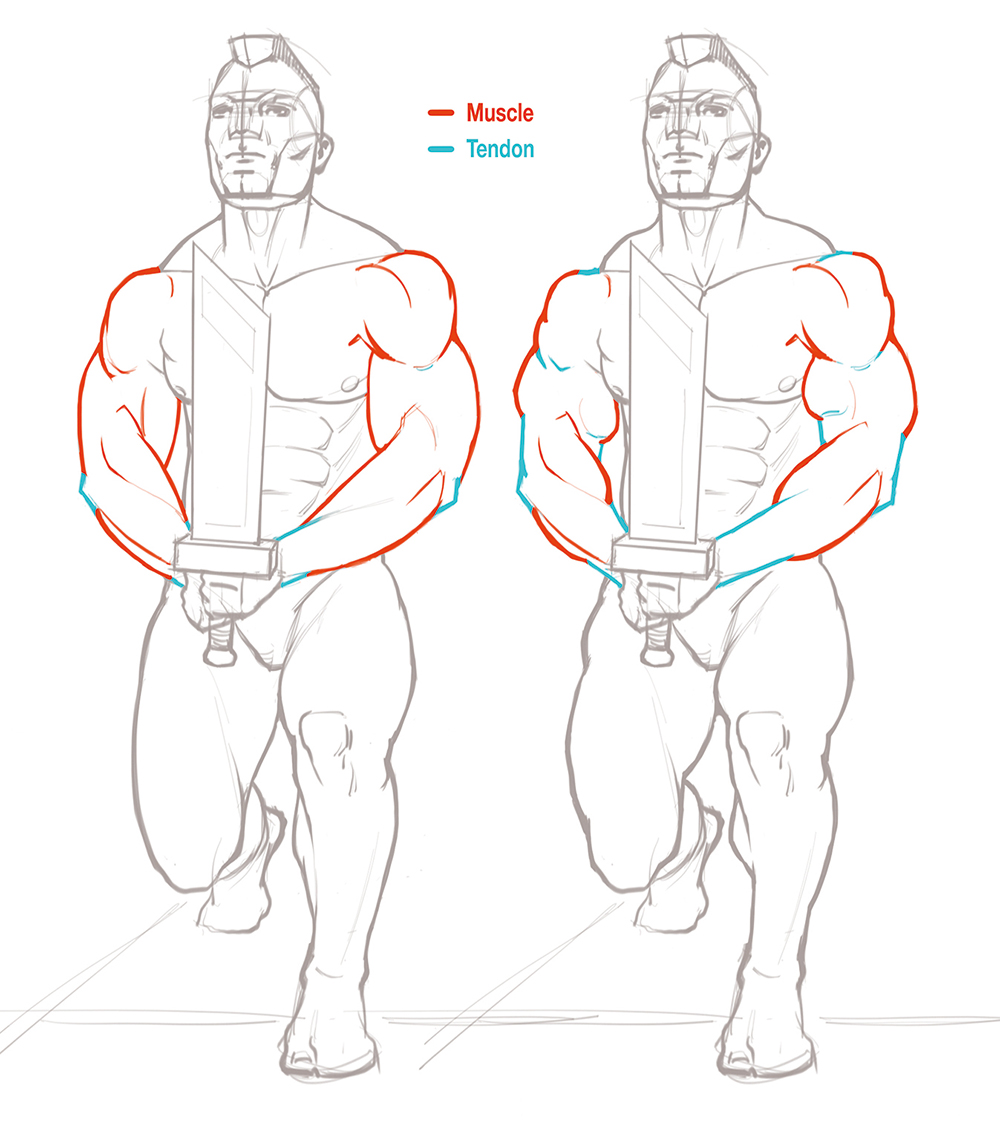
People are born with unlike lengths of musculus versus tendon. It's a subtle deviation that volition affect how long and elegant, or sharp and athwart, their muscles wait. With long muscles, when the muscle is flexed, it will appear smooth and graceful. Long tendons means in that location's less room for the musculus. They'll have a sudden start and terminate, actualization like mount ranges. Compare different bodybuilders to see this effect in activity.
11. Anatomy tracing and invention
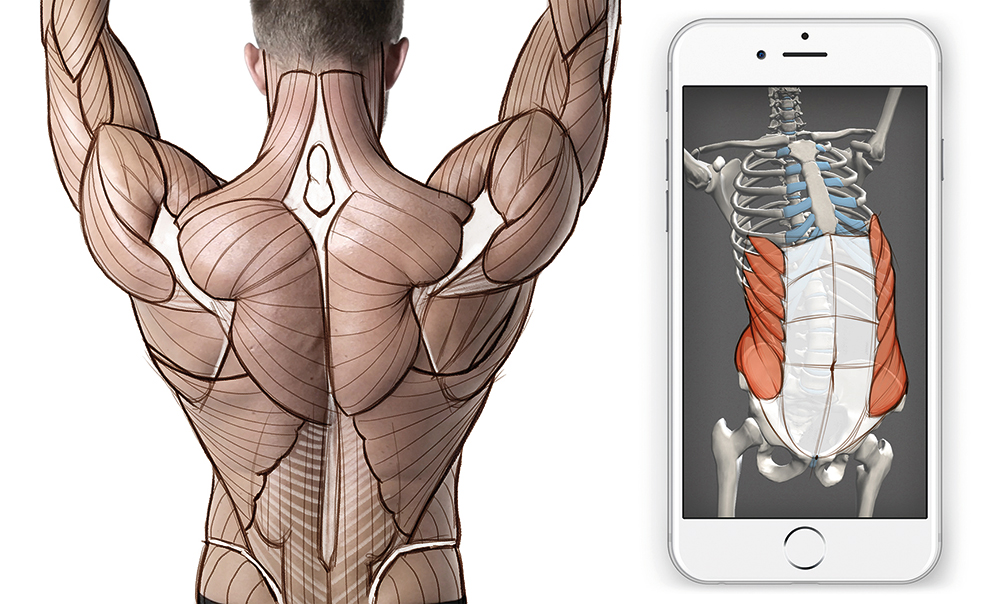
Prepare to practise muscles? A great practise is chosen beefcake tracing, where you lot nautical chart the muscles on elevation of a photo reference. It's a little easier for beginners considering yous don't take to juggle many cartoon factors at one time and can focus on recognising and accurately placing muscles. When you get comfy with that, crank it upwardly a notch and invent the muscles from your imagination on top of a skeleton reference. You lot tin can draw the skeleton yourself, or utilize the mobile app Skelly, a poseable anatomy model, to quickly pose an accurate reference to draw on.
12. Agreement the pectoralis major

Let'south larn a muscle. The pectoralis major'south course is alike to a apartment box, tucked into the corner of the collarbones and sternum. Its three distinct portions (the clavicular, sternal and abdominal) overlap each other in a folding fan pattern, and twist over each other where the musculus pulls from the rib cage to insert on the arm. When the pecs flex, its muscular bundles become easy to see on the surface form. Fat gathers on top of the pecs forth the outer-bottom corner in a crescent shape, and gives the pecs a singled-out edge.
thirteen. Think of breasts like water balloons
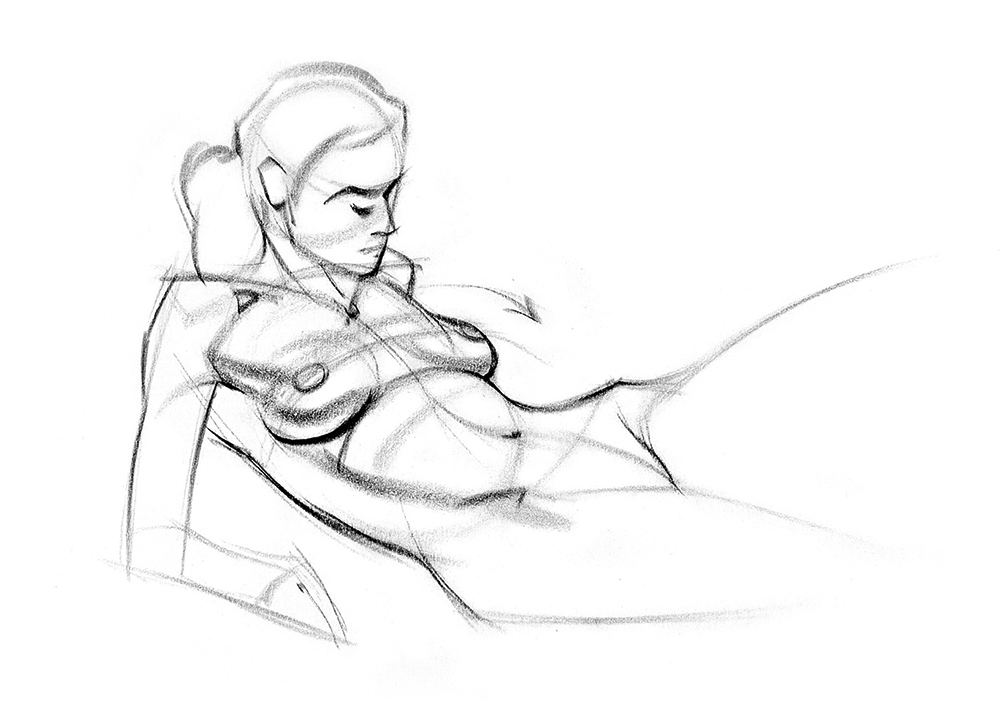
Retrieve of the breasts as water balloons rather than spheres. Prove gravity in your drawings by letting the breasts hang or wrap effectually the rib muzzle, depending on the pose. Continue in mind that the pectoralis major lies underneath. The pecs are easy to see where the breast tissue thins, on the upper chest and near the armpits. If the pecs are flexed, you'll see pec bundles, even on non-muscular women.
14. Putting some back into it
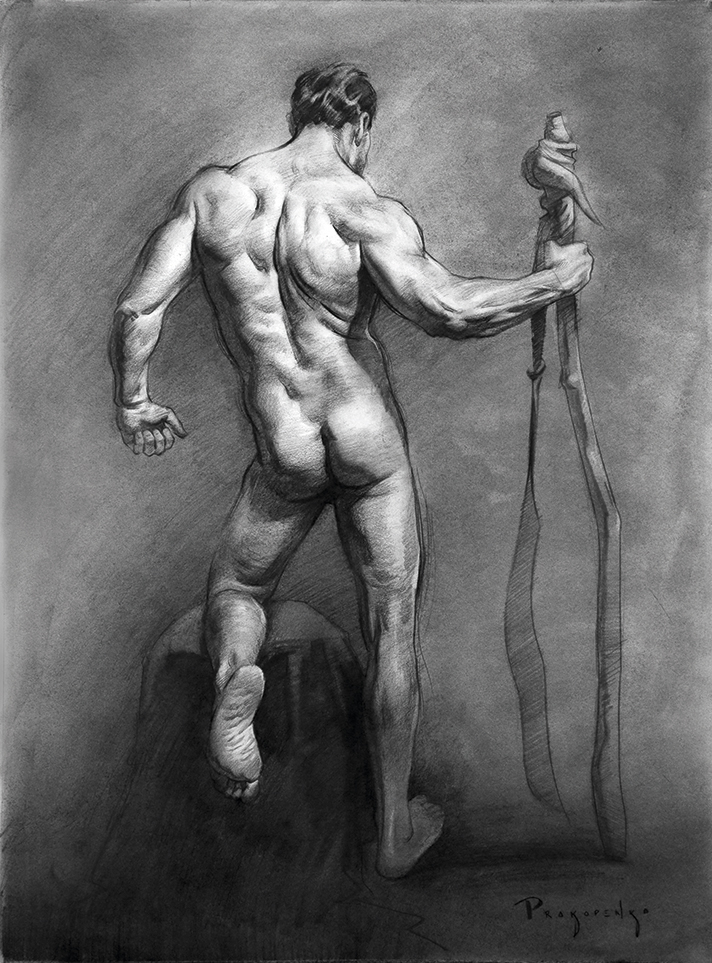
The upper back is an intimidating surface area. Y'all accept numerous shoulder muscles to learn to draw, going from the shoulder bract to the armpit, creating a agglomeration of thin tube-similar forms. The shoulder has the widest range of motion of whatsoever joint in your body and information technology needs all those small muscles for that. The big masses of the back are the trapezius along the cervix and upper back, erector spinae, which follows the length of the spine, and latissimus dorsi, which gives the torso that 5-shape.
15. Decide on how much fat and how much muscle?

Have yous ever seen a skinny guy with a six-pack? Or have you e'er spotted a very strong wrestler with a bit of a belly on him? I certainly have. Fat develops on top of muscle. Even a thin layer of fat volition smooth over muscular definition and soften the class. Body types are not a matter of fat or muscular, only "how much fat?" and "how much muscle?" Using those ii factors together, you can create a diverseness of body types for a range of characters.
This commodity was originally published in ImagineFX (opens in new tab) magazine effect 135. Buy it here (opens in new tab) .
Related articles
Source: https://www.creativebloq.com/how-to/draw-accurate-bones-and-muscle
0 Response to "Why Cant I Get Comfortable Drawing Fat Bodies"
Postar um comentário